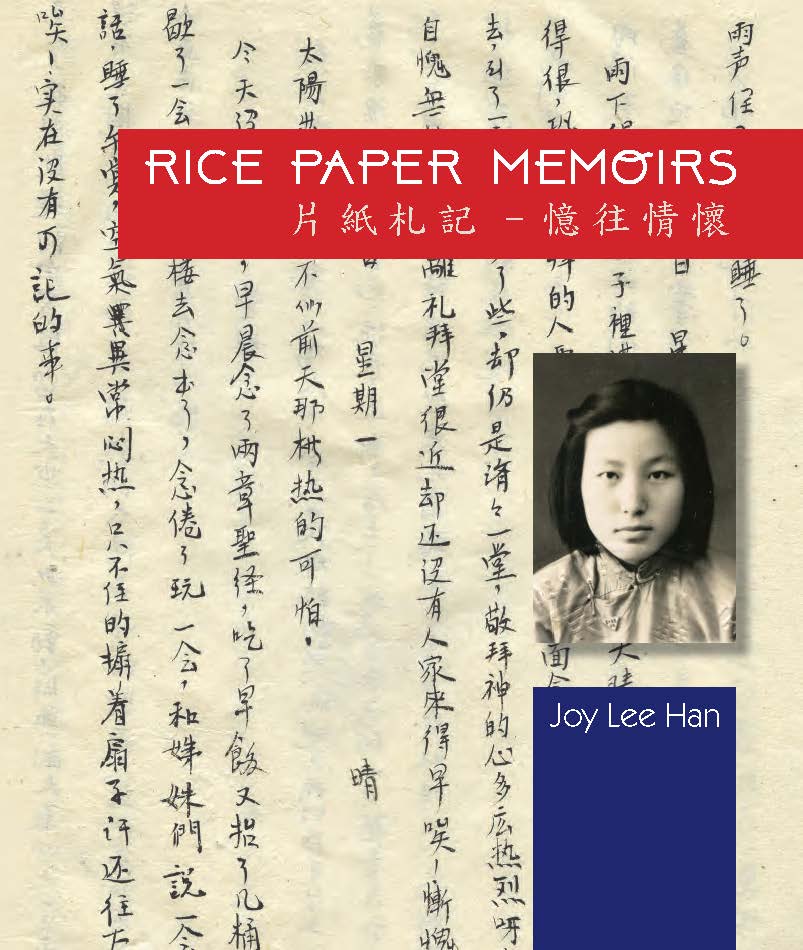Spotlight Publication
Rice Paper Memoirs
by Joy Lee HanDownload Mail Order Form

Chinese Immigration Experience Explored in Rice Paper Memoirs
One of thousands of Chinese immigrants to the United States in the 1950s was nineteen-year- old Joy Lee, whose inspiring journey to a new world—and a new life—personifies the immigrant experience. Almost sixty years later, with US immigration policy in the headlines, the story of Joy Lee Han, documented in her new book, Rice Paper Memoirs, is a must-read.
In touching, heart-felt prose, Han recounts her early life in Kaifeng in north central China, describing both idyllic childhood days spent raising silkworms and tending her grandmother’s goats, and the terror of Pearl Harbor Day, when she was forced, with her parents and five siblings, to flee the American Baptist Compound where they lived. Nine years later, she would find herself on the run again, this time sneaking across the Chinese border into Hong Kong on her way to America.
Han’s story, first recorded in homemade rice paper journals and illustrated with more than one hundred personal and historical images, documents her battle against tuberculosis, college days in Texas, and settlement in Michigan’s Upper Peninsula, where she raised three children. Northern Michigan University’s Russell Magnaghi, professor emeritus, describes Han’s memoir as “a riveting work” and “a valuable piece of immigrant literature.”
Here is an excerpt from the book:The earliest memory I have is of my grandmother. She was my father’s mother and lived with us for as long as I can remember. Her name was Li Yangrong (李楊榮) and she was born in 1867, during the Qing dynasty, in a little village called Kwotien located south of the city of Kaifeng in Henan Province in north central China. She had given birth to two daughters before my father was born. Later in her life, when she was a widow, she was referred to as Lady Li Yang, but we called her Nai-Nai.
My grandmother was short and quite slender. As a child, her feet had been bound, which was traditional for girls at the time. By the time I knew her, she wore her graying hair in a bun on the back of her head, a style that was customary for older, married women in China. She was the matriarch of our household and was feared and respected by family members and servants alike. My grandmother often took me with her to visit her friends, or to the local railroad station where we watched trains speeding by. I always wondered where they were going, and wished that someday I would be able to ride the train to faraway places.
To order this book, please print out and mail this order form:Mail Order Form